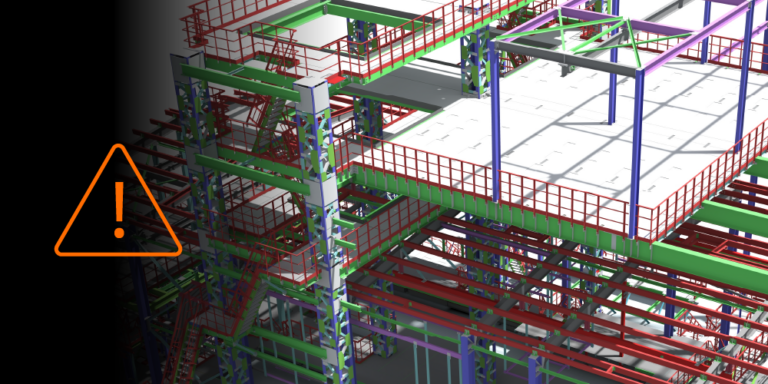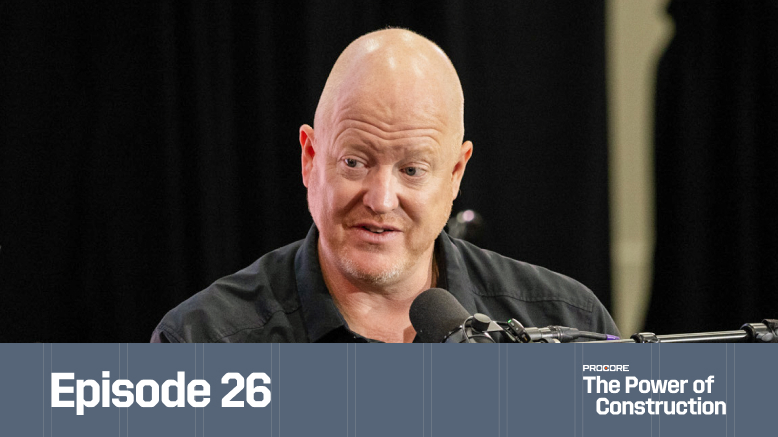— 9 min read
BIM Clash Detection: Using Virtual Tools to Catch Problems Early


Last Updated Oct 3, 2025

DJ Phipps
Senior Principal Strategic Product Consultant
16 articles
DJ Phipps has spent over two decades working in the building and design industry. He's dedicated to using technology to make work easier and more efficient, with a focus on project management and improving systems. DJ now plays a key role at Procore as a Senior Principal Strategic Product Consultant.

Kacie Goff
Contributing Writer
91 articles
Kacie Goff is a construction writer who grew up in a construction family — her dad owned a concrete company. Over the last decade, she’s blended that experience with her writing expertise to create content for the Construction Progress Coalition, Newsweek, CNET, and others. She founded and runs her own agency, Jot Content, from her home in Ventura, California.
Last Updated Oct 3, 2025

On a simple build — say, a two-story house — it’s fairly straightforward to coordinate what needs to be built where and when. But as the scale of the project grows, the number of systems and components that it needs to include does too. And that can make the positioning of all of those pieces more complicated.
To be sure building systems won’t conflict, the construction project team coordinates the project. That means they integrate the designs and drawings prepared by different stakeholders. Their goal is to create a unified plan for the project that doesn’t contain any clashes and is constructible. In other words, they make sure that the spatial layout of everything the project requires makes sense. They want to make sure that no ductwork needs to run where steel beams are, no wiring cuts through plumbing and no systems are too close to walls to limit maintenance access, for example.
This spatial coordination effort is called clash detection. As building information modeling (BIM) becomes more widespread, it’s changing how this key piece of planning happens. Now, teams can use the model to analyze the project and look for clashes and constructability in a virtual environment.
Table of contents
Clash Is in Session: The Basics
By one definition, a clash is fairly simple: It occurs when the drawings for the project call for two objects to intersect one another. But because there are different types of clashes, it can get more complex.
Types of Clashes
Hard Clashes
Hard clashes fall under the basic definition laid out above. When the drawings or model has two solids in the same place, that constitutes a hard clash.
Soft Clashes
Two tangible objects don’t necessarily need to intersect to create a clash. A soft clash occurs when objects graze one another or are simply too close to be operational. If a system that will require maintenance is too near another object and personnel would consequently be unable to service it, that constitutes a soft clash. Some platforms allow BIM managers to build required tolerances into the model to enable soft clash detection.
Sequencing Clashes
These clashes develop not because objects overlap, but because schedules do. If the project is deploying 4D BIM, a clash might be detected if schedules don’t align. If the 4D BIM model calls for drywall to be installed before the ductwork behind it, for example, that would constitute a sequencing clash.
2D Clash Detection
While BIM clash detection is making it easier to look for clashes by modeling them in the virtual environment, clash detection has been happening since long before BIM. Because you can’t physically install two things in the same place, construction projects have always required spatial coordination.
Decades ago, project managers might have laid paper drawings over a light box to look for overlapping systems and components. As software advanced, clash detection could be performed digitally by overlaying drawings from different disciplines and looking for areas of congestion. Some software solutions even enable color-coding to make clashes more visible and, consequently, easier to detect.
While that drove clash detection forward, this coordination effort was still confined to the 2D realm.
3D Clash Detection
2D clash detection can be effective, but taking spatial coordination into three dimensions makes it more robust and effective.
The BIM clash detection process usually doesn’t begin during design development. Instead, it starts once the model for the project has been sufficiently populated by various trade partners. In other words, the systems and components from those trade partners’ drawings need to be added to the model before clash detection will be effective. (If trade partners don’t have their own staff to do what’s required in the BIM model, third-party companies can help.)
As a clash avoidance measure, project managers will typically organize the items added to the BIM model and when they're added. The BIM execution plan and the company’s established hierarchy of systems help here.
Many GC firms prioritize populating the building’s structural components and hard-to-move aspects like sloped piping first. This enables more flexible systems and components to be populated later around those elements, ideally minimizing clashes. The plan for populating the BIM model in a sequenced way that promotes clash avoidance is shared with stakeholders at the kickoff meeting.
Once the model has been sufficiently populated, the work of BIM clash detection begins. Many companies have a template of predefined sets of clashes they can use to run clash analysis on the model. That said, each project usually has its own set of rules that get applied during clash detection. Some projects might require a more granular level of detail than others, for example.
Focused BIM Clash Detection
Even with BIM clash detection, project managers shouldn’t necessarily rely wholly on the model. Effective coordination processes might require 2D coordination along with the 3D coordination efforts, because not everything is modeled — and not every model is 100% accurate.
For example, coordinating items in a ceiling may need to be done in 2D because objects are above and below the ceiling and clash detection may not effectively identify them with a 2D plan that places all the ceiling objects.
Many people think that BIM clash detection requires an all-or-nothing approach. Either coordination and clash detection happens in 2D, or the entire project is modeled in 3D and clash detection is performed there. But in reality, stakeholders can apply BIM clash detection judiciously. Rather than modeling everything, they might model specific areas of concern. 2D coordination can help them pinpoint areas of potential congestion that they then model in 3D while leaving straightforward areas unmodeled.
On some projects — for example, healthcare projects — corridors can be jam-packed. As a result, a BIM manager might be looped in specifically to model the corridors. This allows stakeholders not only to detect clashes but also to deploy clash avoidance exercises. They might take slices of the modeled corridors and develop predefined areas and elevations at which necessary components should be placed.
Benefits of BIM Clash Detection
When problems are caught in the virtual environment, they’re faster and easier (and less expensive) to fix. As a result, projects can see time and money savings by deploying BIM clash detection.
This is particularly useful in the modern era of construction where schedules have become especially aggressive. In fact, when stakeholders argue that they don’t have time to perform BIM modeling, that project might need it more. Projects with tight timelines leave little room for error correction. BIM clash detection can minimize the potentially extensive delays that arise when something is installed incorrectly, from the time people spend trying to find a solution to the time required to uninstall the problem and reinstall it correctly.
Beyond that, this type of robust clash detection can promote jobsite safety. Because rework is a leading cause of injury, quality work is a critical safety measure. And this kind of thorough analysis looking for potential problems can help to reduce the amount of rework needed.
Coordination — including BIM clash detection — can be particularly useful for prefabrication. Clash detection allows stakeholders to be confident in the model, which allows them to prefabricate systems and components. The prefabrication happens in a safer, more quality-controlled environment than the jobsite. It can then be shipped to the jobsite and installed much more quickly than if it needed to be built on the site from scratch.
Free AI in Construction Course with Hugh Seaton
Start learning today with industry expert Hugh Seaton and discover how AI can boost efficiency, reduce risk, and transform your projects.

Clash Detection Challenges to Overcome
While BIM clash detection can yield serious benefits, it’s not without its drawbacks.
First and foremost, there’s no such thing as a clash-free model. The pursuit thereof can be a time-wasting distraction. There are certain things in the model that simply aren’t worth the effort required to clear clashes.
If there’s a clash with flexible ducting, for example, time and money would be wasted by asking the mechanical team to go in and make that change in the model. Instead, the BIM manager will generally approve the clash in the model.
There are also instances in which clearing a clash would interfere with operability. Adding several bends to a pipe might clear a clash, but too many bends could inhibit its performance.
Ultimately, stakeholders shouldn't focus on getting the model clash-free. Instead, the emphasis should be on creating a model that’s constructible. Here, the knowledge and expertise of people with experience on similar projects goes a long way.
It’s also important that the BIM team at general contracting firms are aware of the potential for scope gaps in the model. Soffit walls, access zones, equipment furnished by others, fireproofing and scope changes that may not be included as part of the BIM Coordination efforts are items typically added to guarantee a robust coordination effort for the project.
Future Advancements in BIM Clash Detection
Today, BIM models can enable the automation of a lot of the planning work required for a construction project (e.g., 3D takeoffs). And that extends to coordination and clash detection.
As technology advances, BIM clash detection should get faster, easier and more accurate. Stakeholders can develop rules, then use AI to automate clash detection based on those rules. Some software will even auto-route certain systems to avoid clashes. Here, it’s important to keep a human in the loop to ensure automatic changes don’t interfere with constructibility or operability.
Plus, advancements are making clash management easier to manage. Some current solutions can group similar clashes together. This way, the person tasked with resolving them only has to look at, say, a dozen categories rather than hundreds of individual clashes. And when the clash detection tool can connect to the coordination tool, the team gets a way to manage and track the resolution of those clashes in an organized, streamlined way.
While BIM clash detection will likely change in the coming years as technology advances, one thing won’t: Clash detection should be part of a broader coordination strategy, not a standalone solution. The emphasis needs to be on developing a model that’s constructible, not necessarily clash-free.
NOV 6, 2025 at 11:00 AM PST / 2:00 PM EST
Free Webinar: Prove your project management software is profitable
Join Procore and Dodge Data & Analytics for a 2025 Dodge ROI Report deep dive.

Was this article helpful?
Thank you for your submission.
0%
0%
You voted that this article was . Was this a mistake? If so, change your vote
Scroll less, learn more about construction.
Subscribe to The Blueprint, Procore’s construction newsletter, to get content from industry experts delivered straight to your inbox.
By clicking this button, you agree to our Privacy Notice and Terms of Service.
Thank you!
You’re signed up to receive The Blueprint newsletter from Procore. You can unsubscribe at any time.
Categories:
Written by

DJ Phipps
Senior Principal Strategic Product Consultant | Procore Technologies
16 articles
DJ Phipps has spent over two decades working in the building and design industry. He's dedicated to using technology to make work easier and more efficient, with a focus on project management and improving systems. DJ now plays a key role at Procore as a Senior Principal Strategic Product Consultant.
View profile
Kacie Goff
Contributing Writer | Procore Technologies
91 articles
Kacie Goff is a construction writer who grew up in a construction family — her dad owned a concrete company. Over the last decade, she’s blended that experience with her writing expertise to create content for the Construction Progress Coalition, Newsweek, CNET, and others. She founded and runs her own agency, Jot Content, from her home in Ventura, California.
View profileExplore more helpful resources

Bid Management Software: Key Features & How to Choose the Right Fit
Bidding on construction projects can be a complex process. Sourcing appropriate bids and requests for proposals, analyzing bid documents, making sure estimates, preliminary schedules, and other mandatory requirements are met...

From “What Is” to “What If” in Construction
In this episode of The Power of Construction, futurist Nikolas Badminton challenges the industry to reimagine what’s possible when we move from “what is” to “what if.” Rather than planning...

Transforming Construction Project Management With Predictive Analytics
Construction leaders who can correctly identify project challenges before they arise can more easily sidestep them. This saves time, money and significant delays. Predictive analytics attempts to forecast future outcomes...

Capital Project Management: A Quick Guide for Construction Pros
With aging infrastructure and new technology needs, capital projects will remain a high priority for communities around the world in the coming years. Effectively managing capital construction projects is necessary...
Free Tools
Calculators
Use our calculators to estimate the cost of construction materials for your next project.
Templates
Find a template to help you with your construction project tasks.
Material Price Tracker
Get the latest U.S. retail prices and view historical trends for common building materials.
Glossary
Explore key terms and phrases used in the industry.
